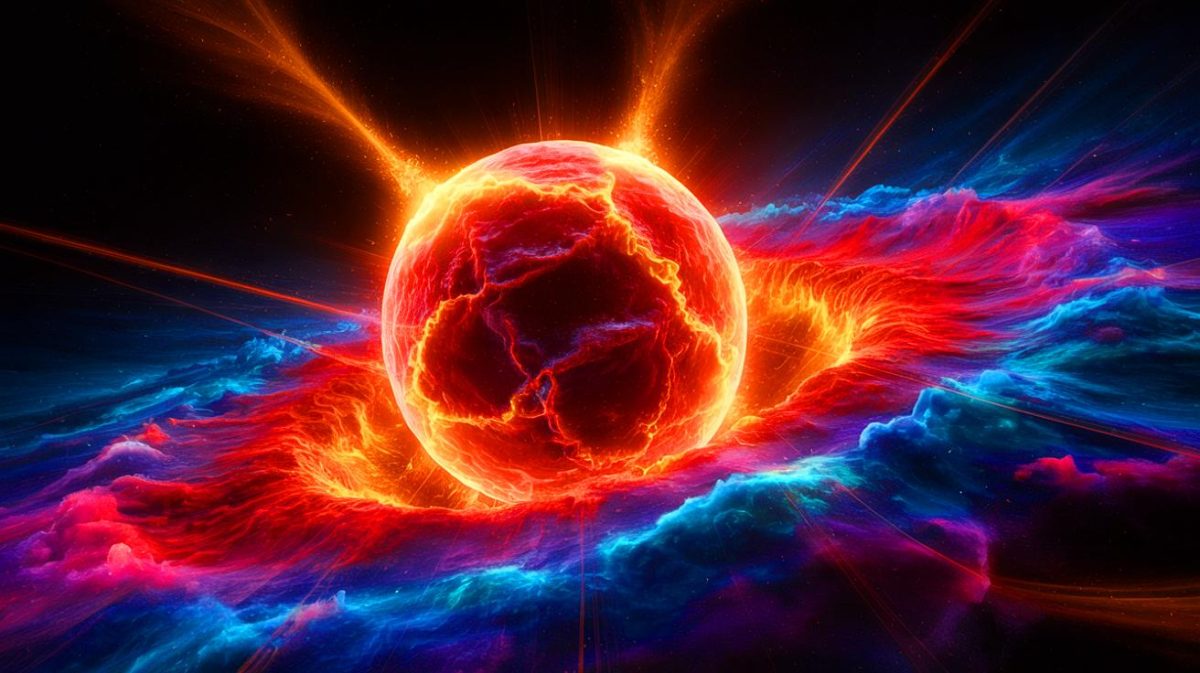| IN A NUTSHELL |
|
In the aftermath of the Big Bang, the universe was a cauldron of extreme heat and density, filled with the elusive and exotic quark-gluon plasma. This primordial soup, existing for mere microseconds, set the stage for the universe as we know it today. As temperatures cooled, the once freely moving quarks and gluons began to coalesce into the building blocks of matter. However, understanding the behavior of this plasma has long posed a challenge, primarily due to the overwhelming complexity of the strong nuclear force. Recent breakthroughs by Italian researchers have shed new light on these early cosmic moments, offering a more comprehensive understanding of how the universe evolved from chaos to order.
The Unyielding Complexity of the Strong Force
The strong nuclear force, a fundamental interaction responsible for binding quarks within protons and neutrons, is notoriously challenging to decode. Unlike gravity or electromagnetism, which can be elegantly described through equations, the strong force exhibits a wild unpredictability at the quantum level. The usual tool for tackling such forces, perturbation theory, falls short here due to the strong force’s robust coupling constant. This constant indicates the force’s intensity between interacting particles, and its magnitude prevents the simplification of calculations through higher-order corrections.
Scientists have turned to lattice QCD (Quantum Chromodynamics) to tackle this complexity. By envisioning spacetime as a four-dimensional chessboard, researchers can simulate particle interactions step-by-step. Yet, even this innovative method has its limitations, as previous simulations could only explore plasma temperatures up to one gigaelectron volt (11.6 trillion Kelvin). This is significantly lower than the electroweak phase transition, a pivotal moment when particles gained mass, marking a major milestone in our cosmic history.
Breaking New Ground with Innovative Techniques
The Italian research team tackled the challenges presented by the strong force by innovating beyond traditional methods. They combined lattice QCD with Monte Carlo simulations, a statistical approach that uses random sampling to solve complex equations. By simplifying the model to a universe dominated by three types of effectively massless quarks, the researchers were able to closely mimic the conditions of the early universe.
Covering a wide temperature range from three GeV to 165 GeV, these calculations allowed the team to derive a mathematical formula describing the entropy density of the quark-gluon plasma. From this, they calculated the plasma’s pressure and energy density using established thermodynamic principles. Importantly, they minimized lattice artifacts by refining the lattice spacing, ensuring that their results were applicable to the continuous universe.
The outcome was startling: even at extreme temperatures, quarks and gluons in the plasma did not behave as free particles. The strong force retained its influence, asserting its dominance much earlier in the universe’s timeline than previously assumed.
Significance of These Revolutionary Findings
These groundbreaking insights into the quark-gluon plasma provide physicists with a clearer picture of the universe’s infancy, allowing for more accurate models of matter formation and the evolution of fundamental forces. The study also highlights the efficacy of combining lattice QCD with advanced computational techniques, offering a powerful tool for delving into the depths of quantum interactions.
While the approach is not without its imperfections, it surpasses existing methods in understanding the intricate behaviors of the quark-gluon plasma. The research team acknowledges that future investigations will require increased computational power to reduce uncertainties and explore additional scenarios. The findings, published in Physical Review Letters, underscore the potential for ongoing advancements in this field.
The Road Ahead: Unraveling the Universe’s Mysteries
As scientists continue to explore the universe’s earliest moments, the recent advancements in understanding quark-gluon plasma mark a significant step forward. By refining computational models and increasing the precision of simulations, researchers can further unravel the complexities of the strong force and its impact on cosmic evolution.
This journey is not merely about understanding the past but also about paving the way for future discoveries that could reshape our understanding of the universe and its fundamental laws. The question remains: What other secrets of the universe’s infancy await discovery, and how will they transform our perception of the cosmos?
Did you like it? 4.5/5 (27)








Wow, recreating the universe’s first moments sounds like sci-fi. How do they even start with that? 🤔
This is mind-blowing! Thanks to the scientists for pushing the boundaries of our understanding.